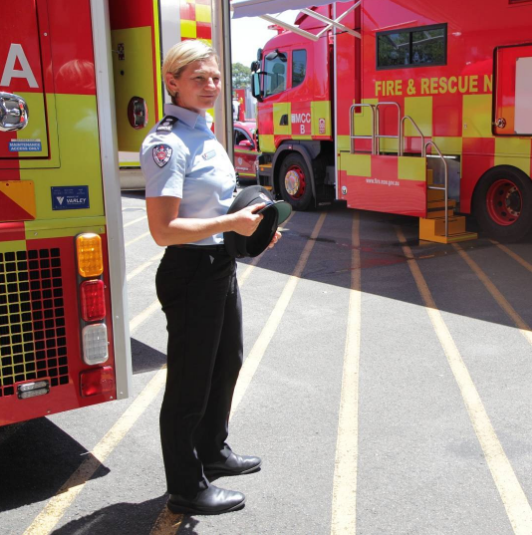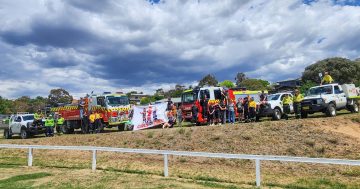
Girls on Fire camps teach young teenagers the confidence, skills and knowledge to pursue a career or voluntary position in the emergency services. Photo: Supplied.
The past summer’s bushfires destroyed dozens of homes and businesses in Mogo, south of Batemans Bay. This summer, the town’s young women will learn how to fight back.
About 95 per cent of Australia’s firefighters are white men, yet research shows that firefighters serve their communities better if they look, speak and act like them. That’s why firefighter Bronnie Mackintosh started Girls on Fire to give young women aged 15-17 the confidence, skills and knowledge to pursue a career or voluntary position in the emergency services.
This November, Bronnie will run the Girls Fire & Resilience Program in several fire-affected areas, including Mogo, after the annual Girls Fire and Emergency Services Camp in Hawkesbury, near Sydney, was cancelled due to COVID-19.
The one-day practical session and virtual workshop will also be available to young women in Dubbo, Griffith, Kempsey, Port Macquarie, Newcastle and Sydney, and aims to build confidence and resilience; encourage problem solving, teamwork and leadership; and test physical limits.
“We were always planning on taking the camp to regional areas, but COVID-19 allowed us to do it sooner and go to areas impacted by fires,” says Bronnie.

Girls on Fire founder and Fire and Rescue NSW inclusion manager Bronnie Mackintosh. Photo: Supplied.
“We know a lot of communities have been struggling with their recovery, and we will tailor the program to the different needs and risks in each community. In Mogo, we are looking at partnering with existing recovery agencies such as BlazeAid. So in the morning, the girls will take part in skill-building activities, and in the afternoon they will be put into taskforces to help a prevention or recovery effort.”
The Girls Fire & Resilience Program will either run on Saturday, 14 November, or Sunday, 15 November, and spaces are available for 16 girls. However, the program will open to another 16 girls and run on both days if more apply.
As well as providing young women with the skills they need to join the emergency services, the program teaches them about the wide variety of jobs the services offer.
While the idea of fighting fires may be daunting for some young girls, Bronnie says it’s only seven per cent of a firefighter’s role.
“We save more lives through prevention, preparedness and recovery than we do fighting fires,” she says. “You don’t need to be an over six-foot white male to do any of that.”

Participants at the Girls Fire and Emergency Services Camp in Hawkesbury, NSW. Photo: Supplied.
Around 50 per cent of the young women who have taken part in Girls on Fire have joined the emergency services, and one of them recently completed the competitive physical test for Fire and Rescue NSW.
“Even those who don’t go on to join the emergency services end up as better people, and parents often say how much the camp brought their daughter out of her shell,” says Bronnie.
When she was growing up, Bronnie wishes she had known that women could be firefighters. She was 32 when she became a firefighter and went on to be a station officer in Newcastle and is now the inclusion manager in Sydney with Fire and Rescue NSW.
“Women of my era didn’t know they could be firefighters,” she says. “I thought the police force was my only option for a physical job with a community focus.
“I was heavily involved with rugby and met some firefighters through that who were recruiting. It was the perfect job for me and I wondered what my life would have been like if I’d known from a young age that I could be a firefighter. That’s how I became so passionate about diversity.”
As a Churchill Fellowship participant, Bronnie travelled the world in 2016 to see how international fire services embrace diversity. She found girls’ fire camps in the US were successfully introducing and recruiting young women into firefighting and other emergency services.
She is also encouraging ethnic minorities to join the emergency services, and has a program for Indigenous women.
Apply for the Girls Fire & Resilience Program here.








